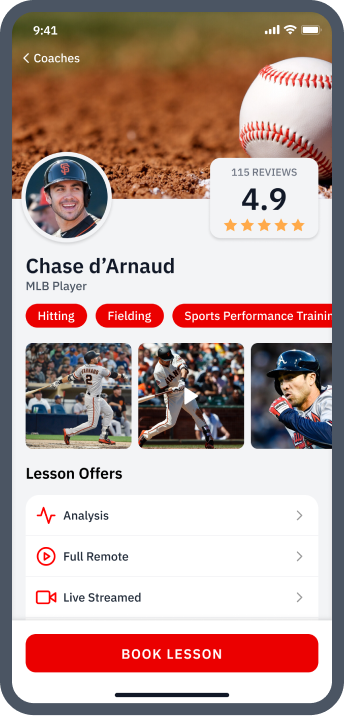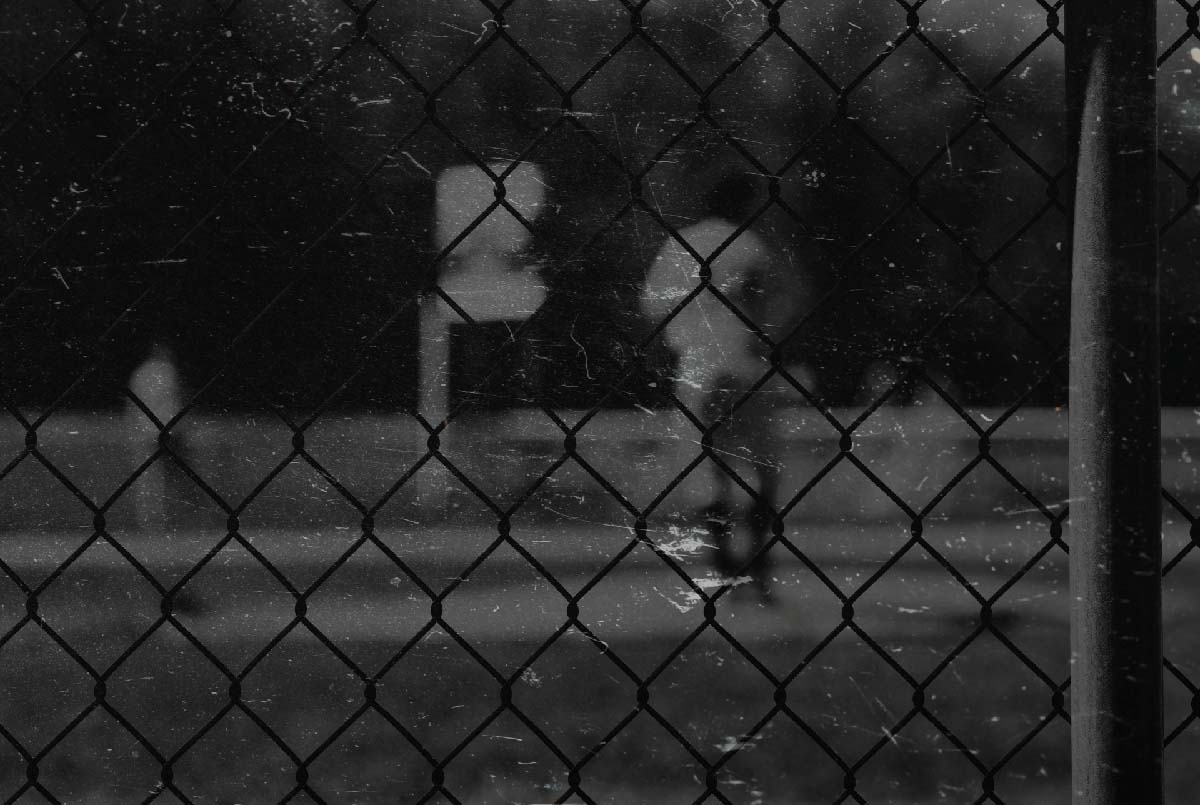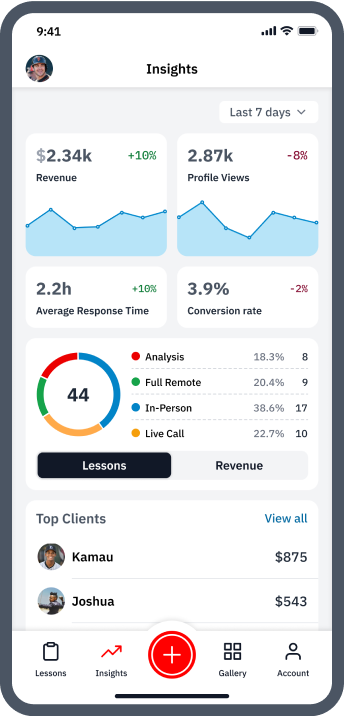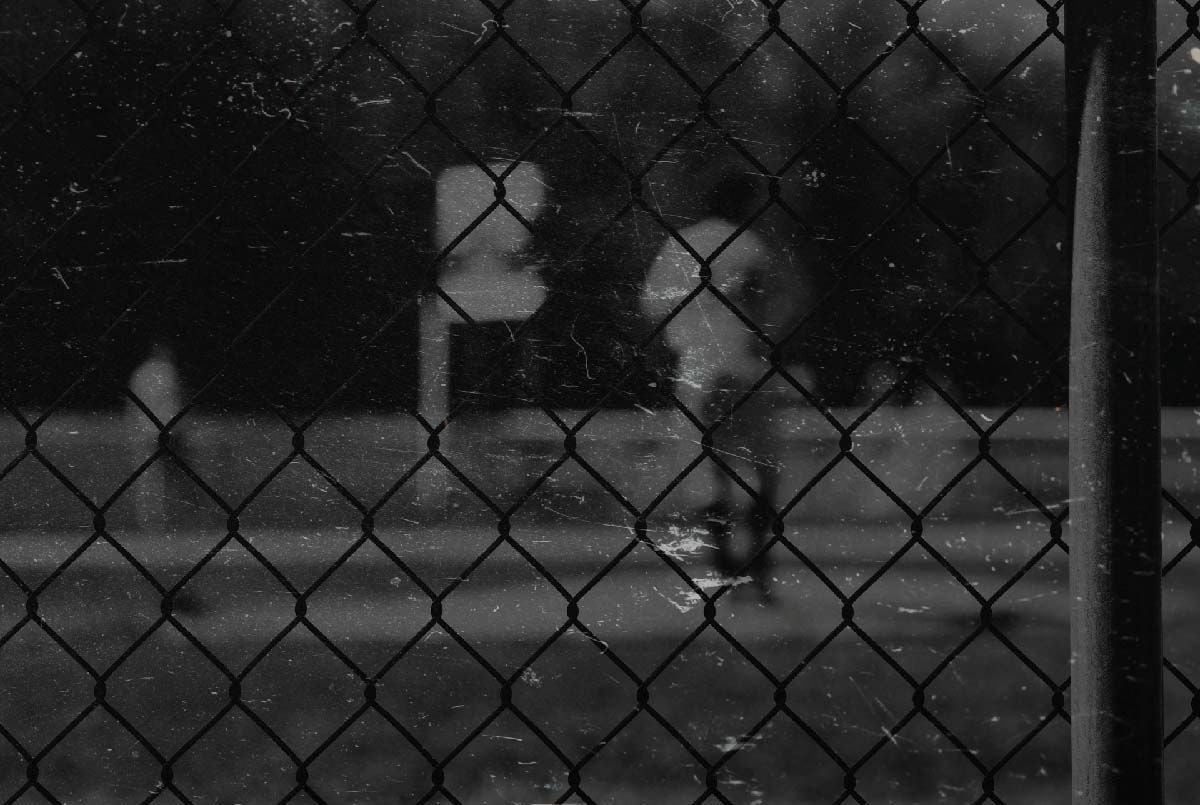How Baseball and Softball Coaches Can Make Money on YouTube

The internet has allowed people to make money from the comfort of their homes like never before.
Although there are various ways to create revenue streams for yourself online, today we’ll focus on how baseball and softball coaches can make money on YouTube.
Initially, YouTube was home to amateur filmmakers and compilations of cats misbehaving.
However, over the years, things have changed.
Through creating and actively posting content on their YouTube channel – which is free to make when you have an also free Google+ account – people from all walks of life are growing their personal brands while educating and entertaining their subscribers.
Those with an entrepreneurial spirit can create a robust online audience hungry to consume their content while attracting companies willing to pay them to advertise products and services.
Whether you are just getting started on YouTube or have been trying it for a while now, this guide will equip you with the tools, strategies, and tactics you need to monetize as a baseball or softball coach.
The TL;DR is:
Baseball and softball coaches can make money on YouTube by becoming an affiliate marketer, becoming a YouTube Partner, selling their own merchandise or services, and running crowdfunding campaigns.
Now let’s pop-up-slide into this exciting opportunity together.
Create Amazing Baseball or Softball Content
Literally, no monetization strategy or tactics matter at all without engaging content.
If you cannot educate and/or entertain with high-quality content and do so on a regular basis, you will not have a chance at growing and monetizing on YouTube in this day and age.
So, let's start here.
If you have no idea how to even start your channel, here’s a nifty step-by-step guide made by Buffer to assist in the entire initial process.
After creating and customizing your channel, the next step is just to start to produce amazing content.
“You don’t say?”
Of course, this is the hardest step, and, again, nothing else is possible without content that baseball or softball people want to see.
But we won’t leave you hanging.
Firstly, we put together a baseball and softball creator’s guide on all the audio and visual gear you might consider picking up to ensure the quality and consistency of any filmed content you want to put out.
And, secondly, here are three popular content ideas within our niche to get help get the wheels spinning.
Wanna grow your baseball or softball coaching brand?
Get connected to new local and online lesson clients—along with all the tools you need to scale.
Download the free app

1. Online How-To Tutorials
These should involve going into depth about a particular topic – like hitting, pitching, catching fielding, baserunning, recruiting, or strength and conditioning – that you have passion and expertise in.
These are likely the most common and intuitive types of YouTube videos that baseball and softball coaches tend to produce.
Here’s an example on how to throw a curveball in softball by Fastpitch Power.
The great thing about how-to tutorials, is that each of the mega-topics mentioned above, like pitching, lend themselves to hundreds upon hundreds of sub-topics.
Some pitching examples are: ideal grips, basic mechanics, advanced mechanical considerations, the mental side, warming-up, cooling-down, recovery routines, band training, weight training for pitchers, mobility exercises for pitchers, bullpenning strategies, trust-building with your catcher, etc.
Such sub-topics will keep you busy filming and editing for months to years.
And, if you’re a pitcher or pitching coach, you hopefully realize that within each of the subtopics we listed above, there are even more fine-grain micro-topics.

2. Swing or Pitch Analysis Videos
These involve using analysis software to react to and make explanatory drawings on the swings or pitching mechanics of professional or collegiate athletes, in order to entertain and educate your audience.
Such analysis videos are simple to produce with the right tools, but captivating to watch. Everyone likes to see the secrets of their favorite athlete’s successes or failures unlocked by a knowledgeable guide.
And there’s no better way to showcase your technical prowess as an expert in the game.
Making analysis video content works especially well if you want to monetize your baseball or softball coaching knowledge in the form of giving online or in-person private lessons.
But it can also help establish the credibility of any camps or clinics you decide to offer.

3. Product Reviews
These are a staple of YouTube content across all niches – including ours.
First you either buy or get sent a new bat, glove, cleat, training aide, or any other baseball or softball related product.
Next you either film yourself actually using the product or sit down and give a talk about the product and its various features – or you do both review styles in the same video.
An added benefit of creating product review content is that it opens up the potential for affiliate sales, which we’ll explain in-depth later below.

Creating a Brand
There’s one last thing to address in the prerequisite section of this guide – and its brand.
In an ideal world, every budding baseball or softball coachpreneur (coach entrepreneur) would spend some serious time working on defining and establishing their brand before even considering the creation of a YouTube account.
We don’t live in that perfect world, of course, and many of you will already have a YouTube account, along with social media profiles, all up and running.
Luckily, brands can be dynamic – especially if they are not yet well-known on a national scale.
In fact, the number one advantage of solopreneur and other small business brands is that they are more agile and dynamic than large corporations who are much slower to experiment, test, and innovate.
And with 1/100th of the R & D and marketing budgets that well-established brands enjoy, single person or smaller operations must use agility to their advantage as much as possible.
Okay, but what exactly do we mean by brand, you might be asking?
And just like the color shirt or shoes you might be wearing right now are not fully a proxy for all aspects of you and your personality, the logo design and brand colors you chose are not nearly the end of what it means to create a brand.
But, to learn everything you need to know about crafting a brand, check out our comprehensive baseball and softball brand creation resource.

How to Monetize on YouTube
The very next thing that you need to consider, after amazing content, is which path or or paths to monetizing with YouTube do you want to undertake.
Do you want to make passive income selling other people’s products, like the hottest new training aids?
Would you like to use the platform itself to generate ad revenue directly from YouTube?
Do you want to create and launch your own products, merchandise, or service offering?
This last option could look like such disparate things as making a baseball-themed clothing line or spreading your knowledge and expertise by giving online remote lessons with clients from around the world.
Despite the different choices introduced above, none of these things are really mutually exclusive. Meaning that you can do a few or even all of them simultaneously to create multiple streams of revenue for yourself.
But we included all of these questions to start you thinking about which way or ways you want to go on this choose your own adventure Youtube journey.
The following is a breakdown of the 4 main strategies that baseball and softball coaches can use to make money on YouTube:
- Become an Affiliate
- Become a YouTube Partner
- Sell Your Own Merchandise
- Use Crowdfunding

1. Affiliate Marketing for Coaches
The great thing about affiliate marketing is that it is empowering to creators.
You can start this type of monetization at any time no matter what the size of your channel is and without needing to qualify under YouTube’s guidelines – as you’ll soon see, this is not the case with all monetization strategies.
Affiliate marketing is particularly easy for coaches whose content is made up of product how-to’s, reviews, or recommendations.
It’s only a matter of turning each recommendation into an organic-feeling suggestion within your YouTube video’s description after signing up with any number of affiliate programs.
The most popular of these programs are Amazon’s Affiliate Program and Click Bank.
Okay, but what is affiliate marketing, again?
Let’s explain by way of example:
Matt Antonelli is a very talented baseball coach and former MLB player, who has launched a popular YouTube channel and built an entire brand around his expertise.
Although the content offered on his YouTube channel is a stellar educational resource for baseball parents and up and coming ballplayers, it is also a case study for other coaches on how to monetize on YouTube.
Antonelli is doing it all.
He’s qualified for the YouTube Partner Program that we will explain in detail later; he has sponsors for many individual videos, who likely compensate him in some way to shout them out, as shown below; and he requests audience fundraising and donations from the Patreon platform
But for our purposes here, he also offers a healthy amount of affiliate product links:

Each time a viewer clicks on one of the Amazon product links pictured below in his video’s description and buys the product, Antonelli gets a percentage of the sale – this is affiliate marketing done well by a great coach on YouTube.
Here is a sample of an Antonelli video description:

Baseball and softball coaches can learn from this professional description page and the fact that all of these various affiliate products are very on-brand for Antonelli.
As a general rule, you do not want to attempt selling products on YouTube that your audience might not already be interested in purchasing.
If you’re interested, we put together a free in-depth guide on everything you need to know to get started making passive income by affiliate marketing and selling in the baseball and softball industries.

How Baseball and Softball Coaches Can Become YouTube Partners
You know how YouTube generally bombards you with ads before, during, and after videos, and again in the sidebar?
This is, of course, how YouTube makes its vast Scrooge McDuck pools of money, but the platform needs content creators producing assorted content en masse, in order to bring in eyeballs, which generates revenue from all those ads.
Enter the YouTube Partner Program, which allows these content creators to partner with YouTube and share in some of the revenue generated by all those advertisements.
Besides monetary gain, YouTube Partners get access to desirable product features that other creators do not, like the use of end screens and cards at the end of their videos, which link directly to the partners’ websites, crowdfunding campaigns, or brand merchandise.
These special features radically help the baseball and softball creators in the channel growth and audience engagement departments.
Being a partner unlocks a myriad of new income streams: Subscription fees, Super Chat, merchandising and channel memberships.

Five steps for achieving partner revenue on YouTube
Step 1: Start an Awesome Baseball or Softball ChannelSee the tips above to crush step 1.
Step 2: Meet the YouTube Partner Program’s requirement Joining the program requires that you have at least 1,000 subscriptions and have logged 4,000 audience watch hours in at least the previous 12 months.
Some great ideas to help in the process are here: how to get more of those precious YouTube views
Step 3: Set up an AdSense account This is one of the simplest procedures in the process. Just check out YouTube's official guide to AdSense accounts.
Step 4. Take Advantage of your New Partner Monetization Features Create great-looking end screens and cards for all of your videos.
You can do this yourself if you have the digital skill (or a willingness to learn), but most will hire a freelancer from Fiverr or Upwork who cranks out stellar end screens all day for very reasonable prices.
Step 5: Submit for Reviews (Maintain your Partner Status)Once approved as a partner on the platform, you have to adhere to the YouTube Partner Program policies and the Community Guidelines. Furthermore, stay on the right side of copyright laws.

How Baseball and Softball Coaches Can Sell Merchandise on YouTube
How to fully ideate and create unique services or products that your audience will love is way outside the realm of this particular article.
But you should know that there are both digital and physical products you could consider selling through YouTube.
Digital
If you're interested in showcasing your knowledge and expertise on YouTube in order to push your acquired audience toward elite baseball or softball lesson services either online or in-person, then here’s a great place to start.
But if you want to use your YouTube channel to provide value while teasing your online video course offering, then you’d be in good company with folks like Steve Springer of Quality At-Bats.
In fact, Quality At-Bats co-founder, Mark Brooks, wrote an massively in-depth guide on how to create and launch baseball and softball video courses that we highly recommend checking out.

Physical products
Physical products are a different story, though.
As opposed to selling other brands’ existing items through affiliate links, as we touched on earlier, here we’re talking about designing and creating things like tee-shirts or innovative baseball or softball training tools.
Merchandising on YouTube is a great way to earn money from your audience.
Here’s the step-by-step mechanics:
Step 1. Imagine and design the product – with audience help
Merchandising for your channel ought to both maintain and further cultivate the existing connection between you and the audience.
This simply means that you should offer unique products that will make sense given what you are doing and who your subscribers are.
For instance, you can use a poll asking what product the customers would be interested in.
On YouTube, this can be done by asking your audience to vote in the comments below.
But, of course, sourcing your audience’s product thoughts and sentiments doesn’t have to be limited to YouTube, especially if you’re just starting out on the platform.
You can also easily run polls on Instagram Stories or with Twitter – depending on where your biggest and most-engaged audience is on social media.
If possible, we recommend letting your subscribers and followers in on every aspect of your product development process – even down to the product’s name and overall look.
This tactic is popularly known as “building in public.”
Of course, aside from polling, this can also mean sharing lots of behind-the-scenes images and videos of building and testing the tools, clothing, etc.
If your audience gets invested in you and your course’s hero’s journey all the way from ideation to finished product, a small, but large enough, percentage of them will also invest in purchasing your products.

Step 2. Source and/or build your product
To get better physical products and in a timely manner, you will need a supplier, a wholesaler, or manufacturer to deliver the finished product.
Search for the supplier that is willing to deliver inventory and also assist in shipping and handle returns.
Checkout Shopify’s “how-to” on the subject of finding a brick-and-mortar company to make your dream a reality to help get you started.
Step 3. Create a landing page and shop
In order to fully sell merchandise to your YouTube audience, you will need a separate website where customers can make purchases.
To assist in linking the website directly to videos on YouTube, refer to YouTube’s list of approved merchandise sites.
Step 4. Enable the YouTube Partner merchandise shelf
It is possible to use the “shelf feature” from your YouTube Partners dashboard (once you qualify for the Partners program) to advertise and sell your channel’s merchandise directly from your YouTube videos.
Step 5. Ensure to promote your product in your videos
Lastly, take time out in your videos to promote your own products.
At first this may be a bit uncomfortable depending on your demeanor, but as long as you continue to deliver top-notch educational or entertaining content, viewers will support you.
Of course, you will want to promote any merchandise you create across all of your social media and email channels as well.

How Baseball and Softball Coaches Can Make Money on YouTube Using Ongoing or One-off Basis Crowdsourcing
A final way to monetize is by soliciting donations from your viewers and subscribers.
This is another common practice on YouTube that some coaches may not take to immediately.
However, once you have professionally filmed and edited around your 100th video and see how much time and effort goes into making each one great, you might strongly reconsider your initial apprehension.
Possibly more relevant for most coaches though, would be crowdfunding for either a new YouTube channel-related project, or for a personal project close to your heart.
These are the steps to help such fundraisers come to life.
Step 1. Set up a crowdfunding account
The YouTube platform has various approved crowdfunding sites from which to choose and direct your funds into.
For one-off campaigns, GoFundMe or Kickstarter are perfect.
However, for a recurring funding option, Patreon, as you saw with Mr. Antonelli, is kind of a gold standard.
Step 2. Promote your campaign in your videos
In all the videos, try as much as possible to promote your goal to ensure all the followers are aware of exactly what you want to do with the money.
Subsequently, ensure all the viewers are well-informed when you attain your goals.
Step 3. Go beyond YouTube
There are so many online platforms that might help to reach out to even a wider audience.
Ensure you also reach out to followers from other online platforms, like your email list or Instagram audience, to attain your goals within the set target.

Wrapping Up
Hopefully this guide has been helpful for fellow baseball or softball coaches looking to make an impact and supplement their income on YouTube.
Unlike other types of channels, like movie review sites, makeup tutorials, and photography gear reviews, the entire baseball and softball space on YouTube is still a relatively uncrowded blue ocean of opportunity for creative players and coaches to capitalize on.
And this won’t always be the case.
So get out there and start publishing consistent videos today.
Wanna grow your baseball or softball coaching brand?
Get connected to new local and online lesson clients—along with all the tools you need to scale.
Download the free app

About the Author
Mike Rogers
Co-Founder & CEO
Mike Rogers has spent a lifetime entrenched in baseball and softball as a player, a private instructor, a training facility owner, and the son of two college-level coaches.

